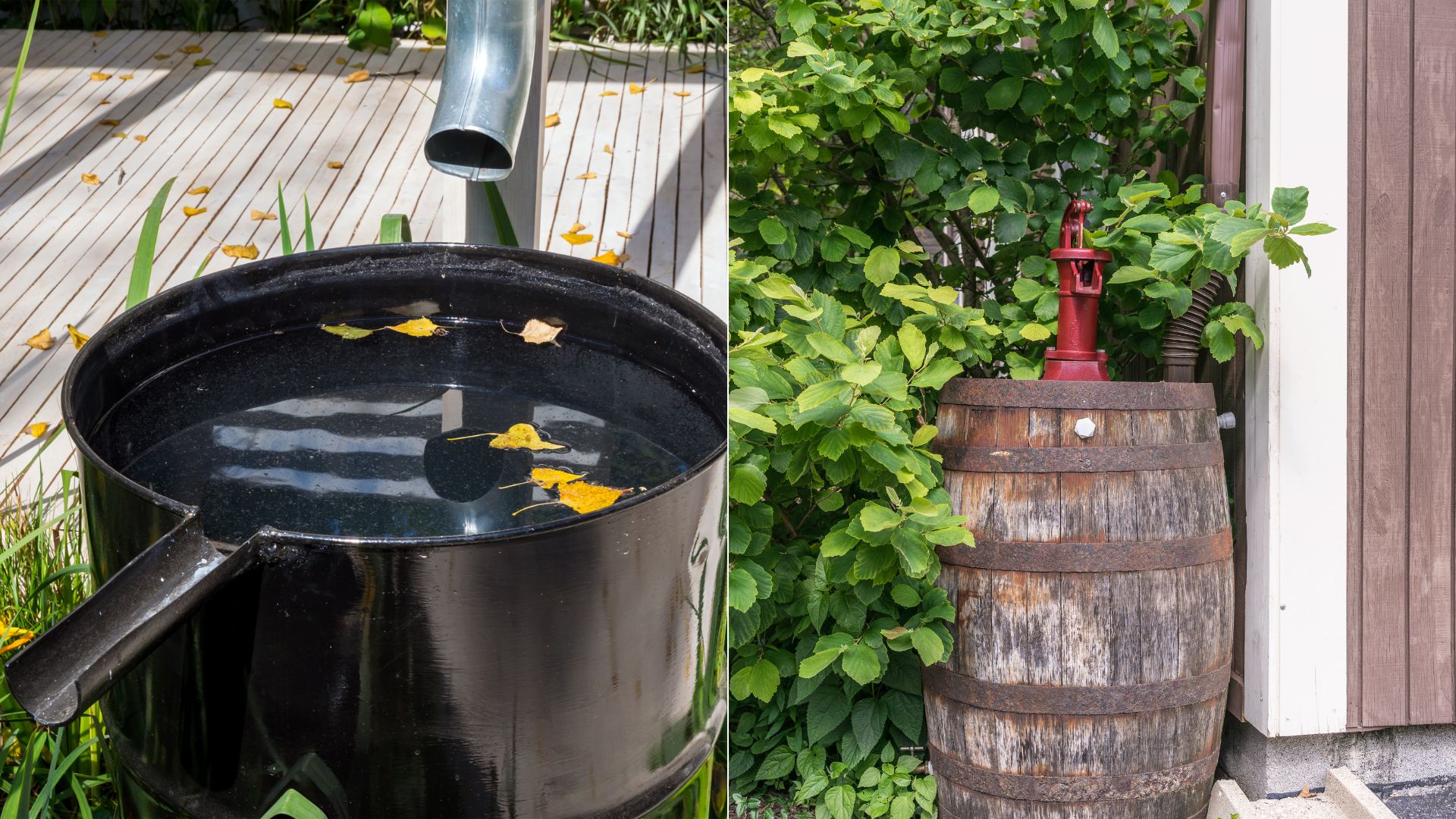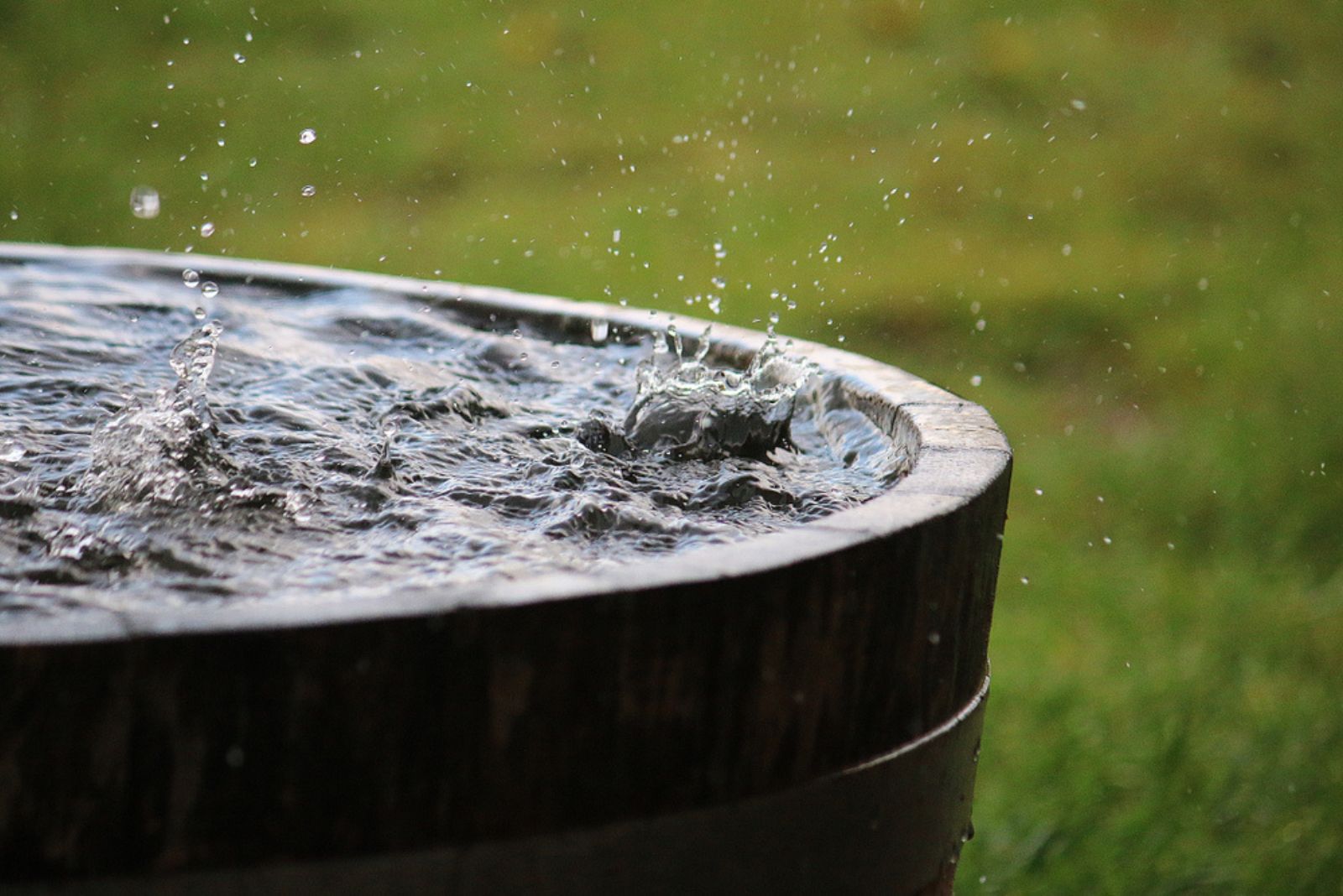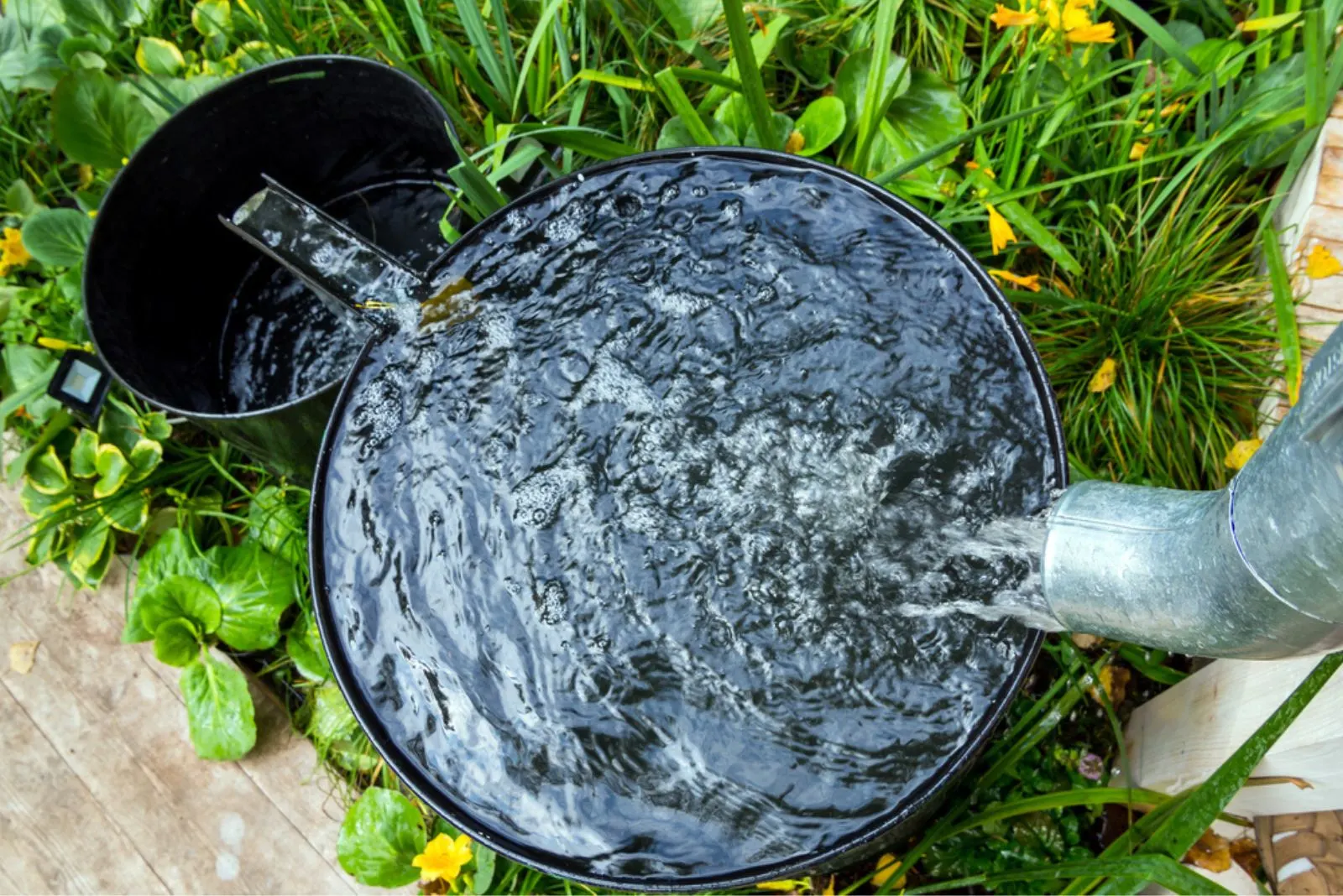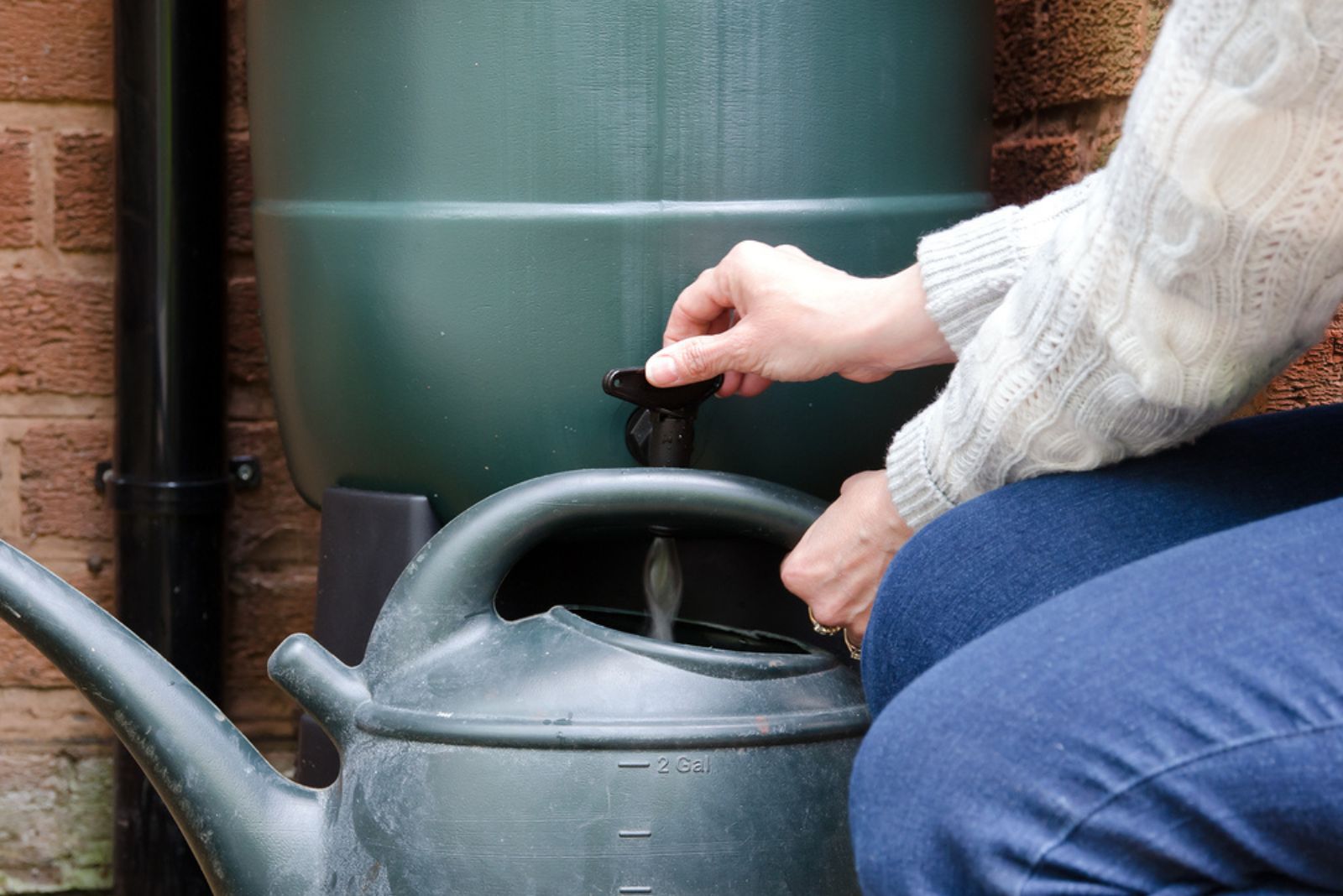Watching a downpour makes you admire the sheer strength of nature and its love for everything that grows.
But it also makes you wonder what you can do with all that water. Collect it, of course! Rainwater harvesting is a great investment and allows you to save money on your water bill.
Did you know that you can collect about 6,000 gallons of water per year if 10 inches of rain falls on a 1,000 sq ft area? (1)
Here’s how to do it!
What Is Rainwater Harvesting?
Rainwater harvesting is capturing and storing rain for future use. You collect it in a barrel or some kind of tank from the roof by using pipes and gutters.
This practice dates back thousands of years. Civilisations of the Indus Valley collected it, ancient Romans, and even people in Brazil and China. (2)
Nowadays, this old technique is experiencing a resurgence and more and more homesteads are collecting rainwater in these times of frequent water restrictions.
Benefits Of Harvesting Rainwater
There are many benefits of harvesting rainwater, which makes it attractive to homeowners, eco-enthusiasts, and gardeners alike.
You can make your life a lot easier by connecting your tank to a drip irrigation setup so you can water your plants without lifting a finger.
And if you have a good filtration system, you can give it to your livestock to drink, use it for toilet flushing, cooking, and even drinking.
Here are its benefits:
• Improved plant health: Rainwater is good for plants because it doesn’t contain chlorine and fluorides which can build up in them and cause various issues, one of which is poor absorption.
• Water conservation: Harvesting rainwater saves water when it comes to municipal supplies and is a sustainable alternative in regions that experience frequent restrictions.
• Emergency supply: In case municipal supplies run out or the restrictions happen very often, you can use your own rainwater supply.
• Reduced bills: You can lower your bills significantly by using rainwater instead of tap water for plant irrigation, flushing toilets, doing laundry and dishes, etc.
However, there are certain hardships when it comes to collecting rainwater even though it is beneficial in the long run.
Initial costs can be rather high, and you’ll have to maintain it regularly to keep the water clean and safe for use.
Furthermore, you can’t use rainwater for drinking unless you filter it properly, and that can increase the cost of the entire system.
Things To Consider Before Harvesting Rainwater
Before undertaking as large a project as rainwater harvesting, there are some things you should consider. Here are its challenges:
• Initial cost: Setting up a rainwater harvesting system can be quite pricey, but it mainly depends on the set up you decide to get and its complexity.
• Space: A storage tank or even a regular rain barrel can be huge, so you’ll need to find enough space to fit them.
• Maintenance: You’ll have to clean pipes, gutters, tanks, and filters regularly to keep the water clean and safe from contaminants.
• Filtration: If you want to use the rainwater for drinking, you’ll have to install a filtration system. That will make the initial cost go up.
How To Do It
You can buy an entire rainwater harvesting system and set it up at the back of your house or you can put your DIY skills to use. Here are some ideas:
• Rooftop rainwater harvesting: This is one of the most common rain collecting methods. You collect it from the rooftop and use gutters and pipes to direct it into a cistern or a tank.
• Rain barrels: Using rain barrels to catch rain is the easiest and cheapest method of rainwater collection. Set the barrel below the downspout, and it will collect rain without much work.
• Rainwater tanks: These large cisterns and tanks can store huge amounts of water that you can use for the entire household. They are much more expensive than simple barrels, but can provide an excellent water source.
• Underground storage tanks: Bury large tanks or cisterns underneath the soil and you’ve got yourself an underground storage tank that collects rainwater. They find their use in areas with high water demand and commercial environments.
• Rain gardens: This special outdoor design uses plants and soil to catch, hold and absorb, and purify precipitation water.
• Dry system: In the dry system, rainwater passes through the gutters and goes into the tank, and the gutters dry out in between precipitation.
• Wet system: In this setting, gutters are always filled with water. Cisterns and tanks are usually further away from the place where collection takes place, sometimes underground.
Post-Harvesting Care
Once you collect rainwater, it is time to use it.
You can use it for flushing the toilet, watering your plants, cleaning tarmac, and other gardening activities without purifying it.
However, you shouldn’t drink or cook with it unless you filter it correctly, even though it does look clean. It can contain various germs, chemicals, toxins, or debris, so you have to purify it properly. (3)
Water Purification
There are several ways you can purify rainwater, and they mostly depend on the quality of rainwater you have and its intended use.
The first line of defense would be preventing debris from getting into the barrel or tank, clogging it, and dissolving in there. You can get gutter guards or screens to achieve this.
After this, you can start the post-collection treatment:
• Boiling: This simple method will kill harmful microorganisms, but it won’t remove chemicals and toxins.
• Filtration: Complex filtering systems, such as carbon or ceramic ones, can remove some germs and chemicals from the water. But they may not remove all varieties of viruses and bacteria. Simpler filtering systems like cloth will eliminate only the visible debris.
• Distillation: This method refers to boiling the liquid until it evaporates entirely, and then condensing it back to its previous state. It can remove most pollutants, including chemicals and germs.
• Chemical treatment: Chemical disinfection usually refers to adding iodine or chlorine to the rainwater. It kills bacteria and other germs, but it doesn’t remove chemicals and toxins. It also may not be effective against certain parasites.
• UV treatment: This method kills germs in the water. Homes with private wells, basins, and other private water sources frequently use this method.
Is Rainwater Harvesting Legal?
Harvesting rainwater is legal in most states in the US, but there are some that heavily regulate this practice, such as Colorado, Nevada, Utah, Illinois, and Arkansas. (4)
In most cases, rainwater harvesting isn’t regulated or the government actually encourages it. Some counties in Texas even give tax incentives and exemption on sales tax for the equipment you may need.
References:
1. Can I Harvest Rainwater? (n.d.). UA, College of Agriculture & Life Sciences Cooperative Extension: Water Resources Research Center.
2. History of Rainwater Harvesting (2023). The Renewable Energy HUB UK.
3. Rainwater Collection. Centers for Disease Control and Prevention.
4. Rainwater Harvesting Laws You Need to Know About (2023). Perfect Water.





